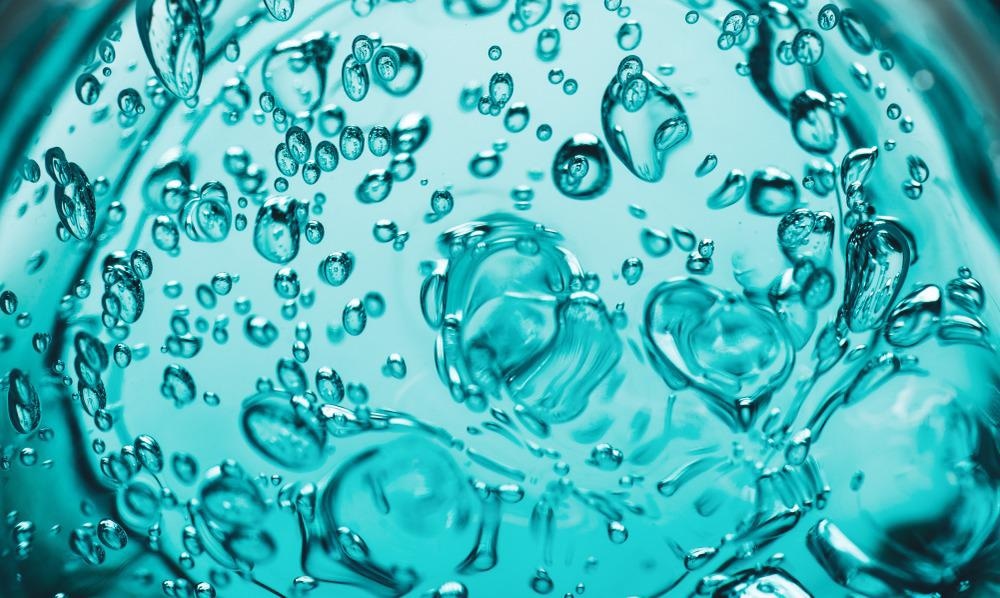Scientists and engineers at the University of Texas at Austin have developed a hydrogel tablet that enables the purification of water, without creating harmful byproducts or residues.

Image Credit: Gilmanshin/Shutterstock.com
The engineered hydrogels create hydrogen peroxide, which neutralizes harmful bacteria with activated carbon particles to destroy cell components of bacteria.
Global Water Diseases
The World Health Organisation (WHO) reveals that 785 million people lack access to basic clean drinking water, with 2 billion people using water contaminated with feces.
Contaminated water and poor sanitation can transmit diseases such as diarrhea, cholera, dysentery, typhoid, and polio, as well as schistosomiasis, a type of parasitic worm contracted through exposure to infected water.
Climate change, population growth, urbanization, and water scarcity pose serious threats to human health. By 2025, it is estimated that half of the world’s population will be living in water-stressed areas.
Sustainable Development Goal 6.1 was established by WHO and UNICEF after the UN General Assembly formally recognized the human right to water and sanitation in 2010.
The Goal calls for universal and equitable access to safe and affordable drinking water.
Progress has been made, with WHO reporting open defecation rates have fallen year on year, with improved access to drinking water sources and piped supplies to premises being made in both rural and urban areas.
However, some academics have criticized progress by questioning how some of the progress has been measured, and in particular, for failing to address that water quality is still a huge problem despite improved access, as well as issues surrounding equity and inequality. (Dijkestra.G et.al, 2018)
Hydrogel Tablet Benefits
The hydrogel tablet has the potential to provide a solution that helps address some of the issues associated with water quality and equity, especially in remote areas.
It is relatively cheap to produce in comparison to installing expensive sanitation systems or equipment.
One tablet could make it more readily available to a greater number of people, regardless of location.
The hydrogel tablet requires zero-energy input, so the most common ways of purifying water by boiling and pasteurization, which require fuel and equipment, will no longer be necessary. This will benefit people without equipment, technical know-how, fuel, or time to carry out those tasks.
The hydrogel tablet could also be used in solar distillation systems, which often malfunction due to an accumulation of microorganisms.
Scaling up of the tablets is also a possibility, as the synthesis process remains unchanged, regardless of size or shape.
They can be used in off-grid locations, as well as in emergency situations.
Chemical Process of Hydrogel Tablets
Anti-bacterial hydrogels (ABHs), with catechol-enabled molecular-level hydrogen peroxide generators and quinone-anchored-activated carbon particles, are effective due to their ability to attack bacteria cell components and disrupt metabolism. (Dundas et.al, 2021)
No harmful byproducts are left behind and the tablets can be easily removed or replaced, as required.
Alternative Water Purification Technologies
The latest water purification systems include nanotechnology, which is the manipulation of matter on an atomic and molecular scale.
Carbon nanotubes are used in water purification plants on an industrial scale, allowing water molecules to pass, whilst blocking contaminants. They remove inorganic, organic, and biological compounds from water.
Acoustic nanotube technology is used predominantly at municipal water plants, medical facilities, desalination plants and industrial sites, including wastewater treatment facilities.
In acoustic technology, sound replaces pressure to drive water away from contaminants through carbon nanotubes.
Photocatalytic technology uses ultra-violet (UV) rays to remove toxic substances from water.
Photocatalysis can break down organic materials such as pesticides, crude oil, and virus microbes, or inorganic compounds such as nitrous oxides.
Aquaporin Inside™ comes from a Danish cleantech company, which uses a biomimetic membrane to allow the passage of water molecules, whilst blocking all other compounds, using both forward and reverse osmosis.
Automatic variable filtration (AVF) technology uses a process whereby the upward flow of water is cleaned by a downward flow of filter cleaning media.
AVF systems are used for municipal drinking water, wastewater treatment, and recycling and desalination plants.
Scaling-up Hydrocel Tablets Worldwide
All the latest technologies are examples of the latest state-of-the-art science and engineering expertise. They are all highly efficient and effective systems.
The downside is that many of them are costly and require on-site installation. They also require the technical capability to run and maintain them. Unlike hydrogel tablets, they require equipment and fuel to operate.
Hydrogel tablets can be scaled-up easily because the materials required to make them are inexpensive.
Engineers and researchers involved in hydrogel production claim hydrogel tablets can disinfect a liter of river water, making it suitable for drinking in less than one hour.
The next step for the hydrogel team is to improve the tablets so they can neutralize more types of different pathogens and viruses. This is something most of the other hi-tech systems can already do, but without the small-scale, inexpensive advantages that hydrogel tablets have.
References and Further Reading
Molecular Engineering of Hydrogels for Rapid Water Disinfection and Sustainable Solar Vapor Generation. (22.07.21) Guo.Y, CM.Dundas, X.Zhou, K. Johnston, G.Yu. Advanced Materials, (Journal) in Wiley Online Library. https://onlinelibrary.wiley.com/doi/10.1002/adma.202102994
Hydrogel Tablet can purify a litre of river water in an hour (05.10.2021) University of Texas at Austin in Science News, Science Daily. https://www.sciencedaily.com/releases/2021/10/211005175424.htm
Drinking Water (14.06.2019) World Health Organisation https://www.who.int/news-room/fact-sheets/detail/drinking-water
The Sustainable Development Goal on Water and Sanitation: Learning from the Millennium Development Goals. (25.08.2018) Dijkestra.G, Eshuis.J, Gianoli.A, Rusca.M, Westrate.M, Springer Nature in SpringerLink (accessed 25.10.2021) https://link.springer.com/article/10.1007/s11205-018-1965-5
Latest Water Purification Technologies – Top Five (05.02.2021) Global Data (accessed 25.10.2021) https://www.water-technology.net/features/latest-water-purification-technologies-top-five/
Disclaimer: The views expressed here are those of the author expressed in their private capacity and do not necessarily represent the views of AZoM.com Limited T/A AZoNetwork the owner and operator of this website. This disclaimer forms part of the Terms and conditions of use of this website.